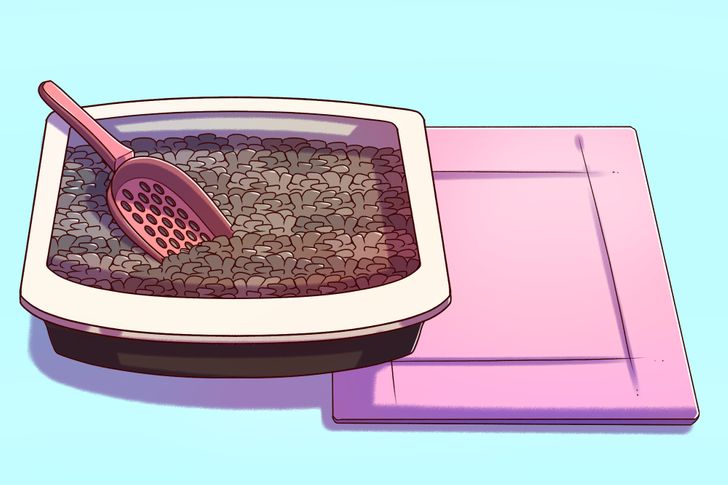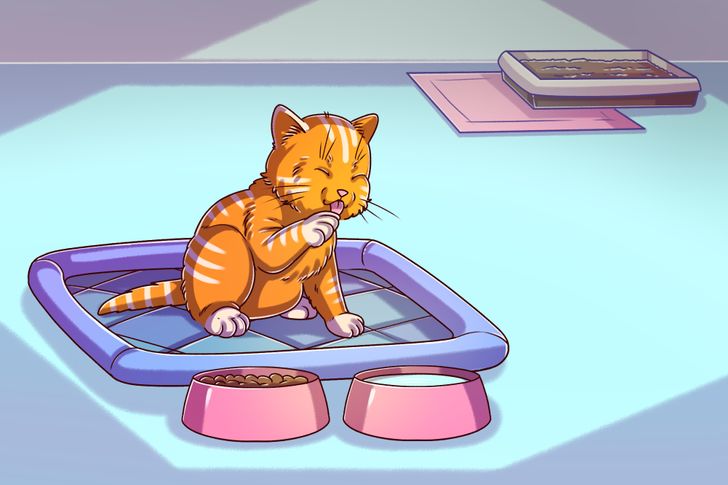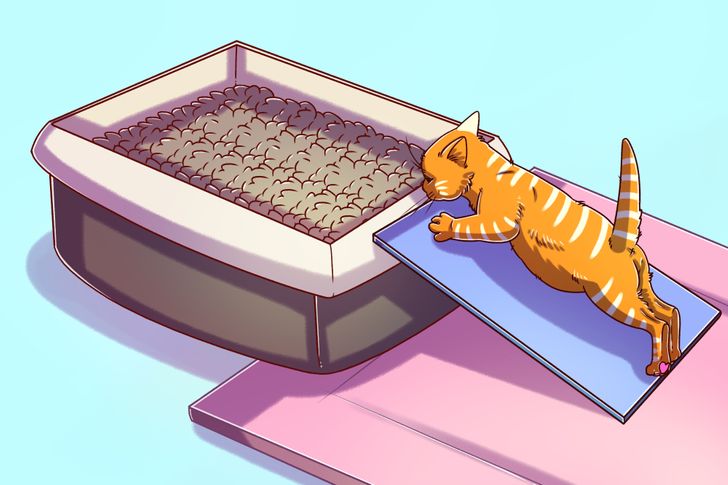How to Litter Train a Kitten

The main things required for litter training kittens are persistence, patience, a bit of awareness, and, of course, lots of pets. We’re better off forgetting pieces of advice that say the animal should have their faces pushed into the place of its spontaneous toilet. These actions won’t lead to anything good and will only destroy their trust in you, turning the kitty against the litter box.
5-Minute Crafts figured out how to litter train a kitten without causing much stress to the animal or its owners.
What you’ll need

-
A litter box — You can opt for an open or closed box. The first option is easier to clean and takes up less space. However, the second option has less odor and is more pleasing to look at. Plus, some cats tend to mark everything around them by spraying urine while standing, and such a “house” will protect the nearby walls and furniture.
-
Filler — The main thing to keep in mind is that the filler should have no smell and contain as little dust as possible. The clump-like filler is good for adult cats: it’s easy to clean and it retains the smell effectively. But it’s not recommended to use it for small kittens, as they like to taste everything and tasting the filler might lead to problems with digestion. You can buy wooden or clay fillers for them.
-
A shovel — you’ll need it for fast and easy partial cleaning of the box.
-
A rubber mat — If you put it next to the litter box, the kitten won’t spread the filler around the house and both their paws and the floor will stay clean.
Training stages

1. Choosing the place: To prevent the kitten from the temptation of marking every corner of the house, it’s better to limit their access to all rooms in your home, except for the area that contains the animal’s food, water, and litter box. If these things are all in the same room, it’s important to place the litter box as far away from the eating spot as possible — cats won’t use the bathroom in the same place they eat.

2. Setting up the litter box: If you have a house-like litter box, you’ll have to remove the roof for a while. Not all kittens like closed bathrooms when using them for the first time. If the sides are too high, install an additional ramp so that the kitten can easily climb inside.

3. Feeding and setting the kitty in the litter box: Kittens always use the bathroom after eating. If you see that your pet has just had food, take them right away, and set them in the litter box. Sit next to them and wait until your little pet finishes their business. When it happens, praise them but don’t clean the litter box — let the olfactory connection occur.

4. Fixing the habit: Repeat the third point until the moment the kitten remembers where they should go to do their business.
Nuances and advice
- If the kitten pooped or peed somewhere outside the litter box, wash that place so that there’s no smell left. Before starting to wash the area, soak a tissue or a napkin in the kitten’s urine and put it in the litter box.
- If your pet stubbornly doesn’t want to use the litter box, you should consider changing the filler. This way, you’ll gradually find the right option for your pet.
- If your kitten uses flowerpots as a toilet, cover the soil with foil for some time to limit their access.
- Don’t scold or frighten the kitten. Don’t show them how to dig into the filler, especially by using the animal’s paws.